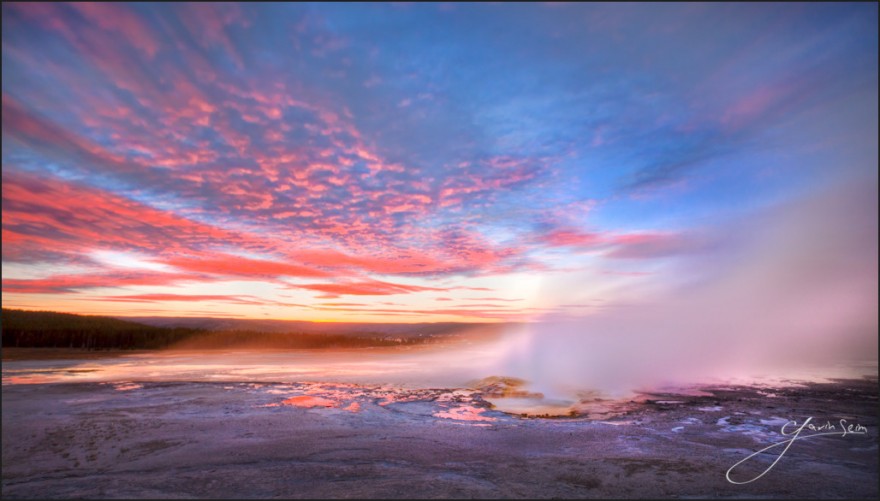I’m on the road, headed to Minnesota for my HDR & LR workshops. It’s a month trip with my wife and kids and we’re getting to see amazing things. Many of which were in Yellowstone. I just did an episode on Photo Couch on Yellowstone, so if you listened to that, you know I was awed by what we saw there.
We discovered Clepsydra at the Paint Pot Geysers during our first drive into the park. Just in front of it out of the frame is the bubbling Spasm Geyser. It turned out to be an incredible sunset and after walking the boardwalks a bit, I knew that this was what I wanted to focus on. I set up the tripod and spent some time planning my frame in a way to being out a beautiful but ghostly feel. This is the result.
For Photographers. How it was made:
I don’t like to be boring, but I’m going to get a bit technical for those of you who want it. The rest can just enjoy the sunset. Because this scene was so stunning I did a few setups, but as I mentioned in the last Photo Couch I’m trying to take more time in composing an planning my fine art images. In the end I think we end up with better work by doing so, than just trying to shoot every angle.
September 12, 2010





